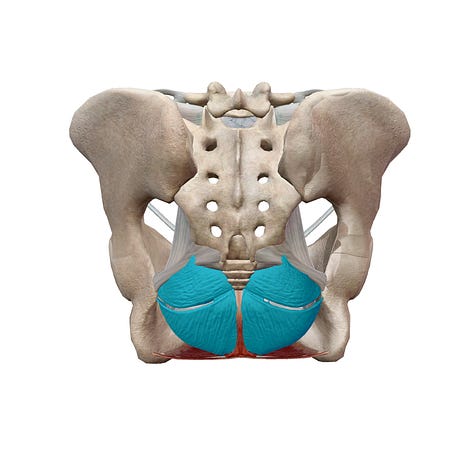COMPANION NOTES: connecting breath and bones
Welcome to this set of extra resources. You'll find further information, a quick anatomy snack video, two guided practices, links to my image collections, some poetry, and journaling prompts.
Developing a first-person perspective of our anatomy can connect us to all sorts of unexpected body wisdom. How? Use factual information to signpost your way through your own body and allow yourself to reflect on the language you use to find your way, the imagery that arises, or the stories or archetypes that show up. It’s my hope that my collection inspires you to create personal explorations and unique resources so that you can tap into an inner wisdom that is very much your own.
ANATOMY
I’d love to introduce you, through your breathing, to the connection between the xiphoid and the coccyx (your tail bone), and in so doing illustrate the synchrony of the thoracic and pelvic diaphragms. I’ll guide you in the practices below, however, it’s helpful if you read through this description first.
Walk your fingertips down the length of your sternum again until you arrive at the tip, the xiphoid process. This is an attachment point for your diaphragm and as you inhale it moves forward and as you exhale it settles back. Should you extend your exhalation, it will move further backward.
Now, you could use your fingertips to find the location of the coccyx, if it feels OK to do so. Or, if you are sitting up ‘straight’ rock onto the back of your sit bones so your pelvis tips back and your lower back rounds/flexes. Your coccyx is midway between the sit bones and at the back of your sense of your pelvis; it forms a joint at the end of your sacrum bone.
The coccyx is a key attachment site for the muscles that form the lining of the pelvic ‘bowl’ (coccygeus, iliococcygeus, puborectalis, pubococcygeus). Also known as the pelvic “diaphragm”, it is responsive to the breath and as such I’d like you to look out for a movement backwards of the coccyx as you inhale and a return forwards on the exhale.



In summary, when we attend to the xiphoid movement it may free up space at the front of the breath, when we attend to the coccyx, it begins to free up space at the back of the breath. And, when we connect them both, the motion of breathing provides an interesting diagonal relationship through the volume of the torso: connecting front and back as well as upper and lower.
It may all become clearer, when you tune into the guided practices below!
GUIDED BREATHING PRACTICE
I’ve recorded the same enquiry twice: the first is in semi-supine (lying on your back with knees bent, feet on the ground) and the second in seated (chair, cross-legged, kneeling etc). If getting up and down from the floor is not available to you, I recommend following recording number one as a visualisation or, of course, just head straight to recording two.
Please only do the practices if you feel comfortable and calm; sometimes attending to the breath can give rise to feelings of stress or anxiety and I wouldn’t want you to feel that way. Also, please don’t put in any effort to change your breath in size or rhythm. Try to let it be as natural as possible and focus on the geography.





